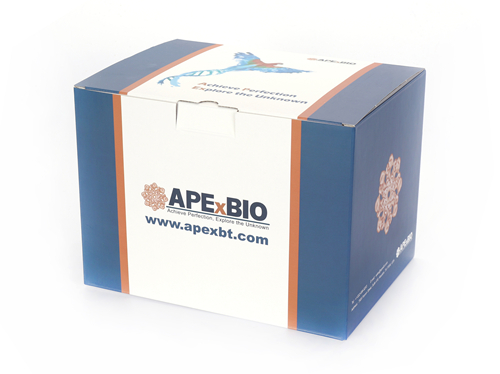Recombinant Bovine Enterokinase Light Chain
Enterokinase (EK) is an amino protease existing in duodenum of mammal and is involved in digestion. It consists of a disulfide-linked 82–140 kDa heavy chain which anchors enterokinase in the intestinal brush border membrane and a 35–62 kDa light chain which contains the catalytic subunit. Additionally, both of the chains are derived from a single precursor that is cleaved by a trypsin-like protease. EK can specially recognize the amino acid sequence DDDDK, and digest the peptide bond after the lysine residue. rEK was report to be more effective than nature EK in cleaving recombinant proteins,.Furthermore, the light chain possesses the whole enzyme activity of EK. rBoEK has the highest activity than EK of other species and is used wildly in biochemical applications.
Reference
1. Yuan LDandHua ZC. 2002. Protein Expr Purif, 25: 300-4
2. Peng L, Zhong X, Ou J, et al. 2004. J Biotechnol, 108: 185-92
3. Light AandJanska H. 1991. J Protein Chem, 10: 475-80
4. Kubitzki T, Minor D, Mackfeld U, et al. 2009. Biotechnol J, 4: 1610-8.
| Alternate Names | Enterokinase, Serine Protease 7, Transmembrane Protease Serine 15 |
| Source | Escherichia coli. |
| M.Wt | Approximately 28 kDa, a single non-glycosylated polypeptide chain containing 235 amino acids. |
| Appearance | Sterile liquid. |
| Stability & Storage | Use a manual defrost freezer and avoid repeated freeze-thaw cycles. - 6 months from date of receipt, -20 to -70 °C as supplied. - 3 months, -20 to -70 °C under sterile conditions after opening. |
| Formulation | 50 mM Tris-HCl, pH 8.0, 0.5 M NaCl and 50 % glycerol. |
| Shipping Condition | Blue ice |
| Handling | Centrifuge the vial prior to opening. |
| Usage | For Research Use Only! Not to be used in humans. |
Quality Control & DataSheet
- View current batch:
-
Endotoxin: Less than 1 EU/μg of rBoEKL as determined by LAL method.
- Datasheet








